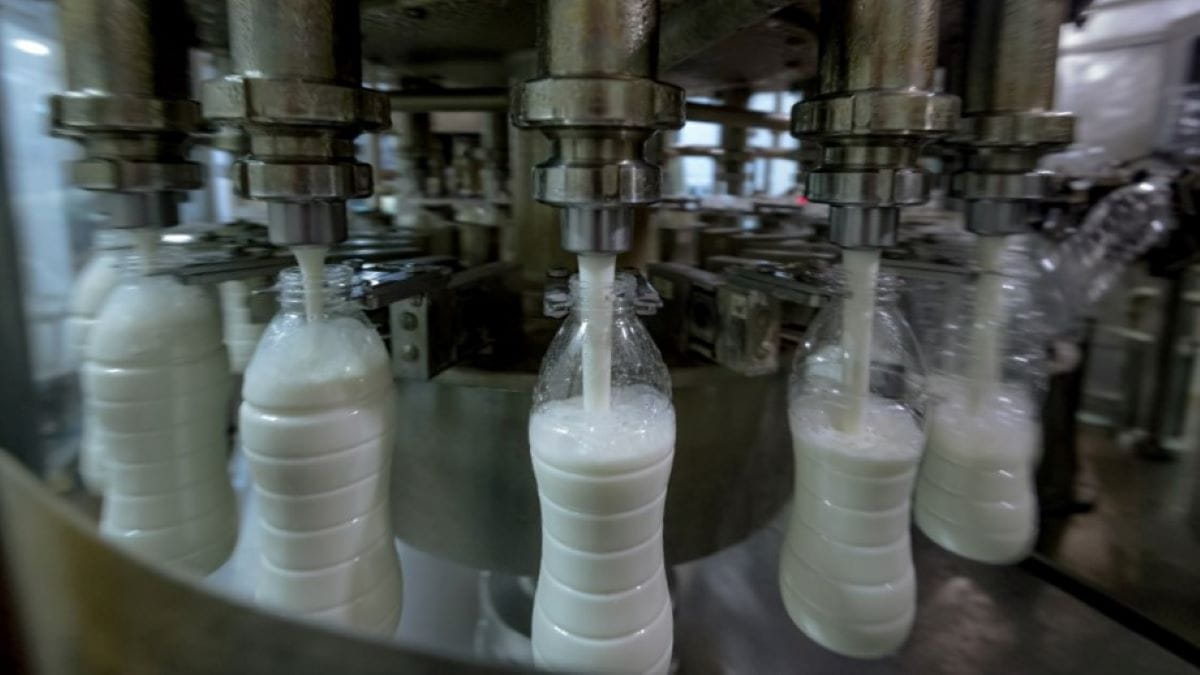Customer: Dairy Company
Dairy Optimizes Condensate Collection and Return for Improved Control and Energy Savings
Expansion can be a mixed blessing. With the satisfaction of increased production and revenues often come the headaches of rate limiting process stages and capacity ceilings.
Such was the case at a leading North Carolina dairy operation, where growth had served to highlight serious deficiencies in the facility’s steam operations.
The dairy called upon Spirax Sarco for an audit of its steam and condensate system.
Initial observations
The dairy operated a single 200hp boiler which could normally handle the load, but it was approaching capacity. The Spirax Sarco audit showed operational costs to be excessive, especially boiler treatment chemicals, fuel and water. Prior to increasing the boiler capacity, make-up water needed to be reduced by returning system condensate.
Some heat exchangers had traps that dumped straight to drain, not returning condensate back to the boiler. Other heat exchangers had small float and thermostatic steam traps on the coil outlet, with a 10’ head to discharge, making the heat exchanger operate inefficiently in a “stall” condition. The only condensate return pumps were small, vented cast iron electric pumps. With the large head, these pumps cavitated frequently, exhibiting short life-spans and causing maintenance burdens.
Pasteurizing improvements
The pasteurizing room had three heat exchangers, for milk and buttermilk. To correct condensate blocking and pump cavitation, Spirax Sarco recommended APT14 pump trap packages be installed on each heat exchanger, positioned to remove condensate by gravity and eliminate the flash steam venting necessary with the old single electric condensate pump. Operating at temperatures above 212°F, the APTs could cycle more heat back to the boiler in the hot condensate, saving considerable energy.
Clean-in-Place (CIP) heating improvements
For heating clean-in-place solutions for ice cream, milk and raw milk processing vessels, the dairy used four shell and tube heat exchangers served by solenoid operated (on/off) steam valves. The ice cream CIP heat exchanger had a thermodynamic trap; the others had float and thermostatic traps.
With closure of the steam valves, condensate formed in the heat exchanger tubes, and the gaseous phase went to vacuum. There were no vacuum breakers installed in the system. With the opening of the steam valves, significant stresses were forced upon the traps and the electric condensate pumps.
Spirax Sarco recommended installing APT pump trap packages for the four units. Two would handle condensate from the paired milk CIP units. The APTs would function as float and thermostatic traps, eliminating steam blocking when the steam valves opened. Draining by gravity, they would remove the hot condensate more efficiently than the small electric condensate pumps they would replace. They would also conserve energy by eliminating both stalling in the heat exchangers and the wasteful flash steam venting required to protect the misapplied electric condensate pumps.
The pump traps were configured as skid-mounted package based on the benefits of simple, three connection installation and singlepoint responsibility by Spirax Sarco.
Based on the success with the processing vessels, attention moved to the case washer, milk production heat exchanger, raw milk CIP and orange juice heat set applications, all experiencing similar stalling and inefficiency problems. These problems were solved by the same pump trap modules.
The results
Conservative estimates of losses in pasteurizing and CIP solution heating totaled about $22,000 per year. Adding maintenance and spare parts costs, payback was estimated to occur in about 2 years.

